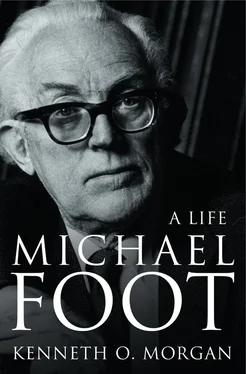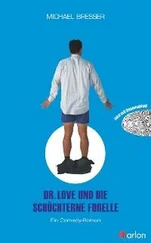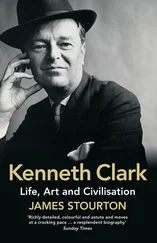When Michael Foot’s hero, David Lloyd George, came to London as a young man at the age of seventeen in November 1880, he set eyes on the House of Commons for the first time. In his diary he admitted to having ‘eyed the assembly in a spirit similar to that in which William the Conqueror eyed England on his visit to Edward the Confessor, the region of his future domain. Oh, vanity!’ 1 Five years later he unveiled to his future wife, Maggie Owen, the force of his terrifying ambition: ‘My supreme idea is to get on … I am prepared to thrust even love itself under the wheels of my juggernaut if it obstructs the way,’ 2 and he was as good as his word. Michael Foot, by contrast, felt no such overpowering urge. Although the son and brother of Liberal MPs (and possessed of a good deal more historical knowledge of the Norman Conquest than Lloyd George), he had no driving political ambition. To none of his friends did he suggest that he might consider becoming a parliamentary candidate. Indeed, when he came down from Oxford in June 1934, even when he returned from the United States six months later, he had no idea of what he might do in life. His brothers were finding their feet professionally, Dingle in chambers as a barrister as well as being an MP, Hugh in the Colonial Service, John in the solicitors’ firm Foot & Bowden back in Plymouth. But none of these routine occupations appealed to Michael’s imagination even though he too, in his way, sought ‘to get on’.
In fact he spent his first six months after graduating very much on the move. There was the jolly visit to Paris with John mentioned earlier, on which he spent a small legacy of £ 50 from his grandfather, a reward for earlier abstemiousness, successfully chasing culture, less successfully chasing girls, gleefully downing his windfall with glasses of Pernod. There followed a far more significant trip for the longer term when he went on across Europe, taking a train to Venice – very much his cherished city in later years – and then a boat from Trieste to Haifa to join his elder brother Hugh (‘Mac’), now serving in the Colonial Service amongst the continuing tensions of Palestine. Hitherto Michael had had no particular interest in the tensions between Jews and Arabs, although most British Liberals, from Lloyd George downwards, had a broad sympathy for the Jews and for the Zionist movement. Churchill’s philo-Semitism when a pre-war Liberal MP was well known. But Michael Foot’s trip in 1934 had a major impact upon him. It was to stimulate the first of many controversial crusades. He first became aware of the qualities of the Jews on the slow boat to Haifa, since virtually all the other passengers on it were Jewish. One of them was an ardent chess player with whom Foot first played serious chess. On this voyage his Jewish friend won every time, but Foot was to become ‘one of the strongest players in the House of Commons’ in later years. 3
When he reached Palestine Michael stayed with his brother Hugh at Nablus, in the famous biblical region of Samaria. For one hellfire Welsh nonconformist preacher the very name had been a symbol of communal turbulence: ‘What was Samaria? Samaria was the Merthyr Tydfil of the land of Canaan.’ 4 In 1934 it was no more tranquil, with a small number of Jewish settlers in a prolonged stand-off with a large Arab community scattered throughout desert villages. Michael quickly realized the complexities of the situation in Palestine, a region left in conflict and possible chaos after the ambiguous pledges to both communities made by Lloyd George’s government after the disastrously imprecise Balfour Declaration of 1917. But whereas brother Hugh, like most in the Colonial Service, was a warm sympathizer with the Arabs, it was the plight of the beleaguered Jewish minority that haunted Michael all his life. After a few tense weeks in Nablus he returned home by a circuitous route, including a cheap ship from Beirut, his first flight, from Athens to Salonika, and a stopping train through Yugoslavia and back to England. There followed his debating tour in America with John Cripps. He returned home just in time for Christmas, after which the more practical problems of getting and spending had to be resolved.
The way that things worked out for him had a critical effect on his entire life. In the absence of any attractive alternative his thoughts turned to writing a work of history, in which the present-day moral would emerge. His chosen area was the life of Charles James Fox, to whom he had been pointed by his reading of George Otto Trevelyan and others, and who had interested him when working for prizes at Leighton Park school. Fox had much appeal as a subject. He was a critic of the overmighty authority of George III and his King’s Friends. He was a colourful personality, sexually liberated – usually a feature of Foot’s chosen heroes, including Hazlitt, Byron and H. G. Wells. He was a literate apostle of the Enlightenment. Above all, he championed the ideals of the French Revolution and of civil liberty through dark times in peace and in war. Foot was always a passionate supporter of the revolutionaries of 1789: they drew him to Tom Paine and to Hazlitt in his reading. A fellow chess enthusiast, Charles James Fox inspired Foot as an essential link in a native English radical tradition that bound the Levellers in Putney church to Cobden and Bright and Lloyd George and Bertrand Russell and the anti-war apostles of the Union of Democratic Control in 1914: the relationship of all this to the separate complexities of the socialist tradition was something he had yet to work out. Fox was naturally opposition-minded; he was seen by A. J. P. Taylor as the founder of the dynasty of ‘trouble-makers’ which his 1957 Ford’s Lectures at Oxford celebrated, and whose steps the Campaign for Nuclear Disarmament consciously followed. Fox had kept alive the red flame of radical courage during the bleak Pittite years. He was the most natural of subjects for the post-Oxford idealist Michael Foot.
But the book never happened. Foot had no money, no publisher, not even a synopsis to wave around. Instead he found himself trapped in a humdrum office job, which was to change his life. It was to become a central point of self-reference and self-definition in his own later interpretation of his career. This arose from his friendship with John Cripps, which led him to spend much time in vacations at ‘Goodfellows’ in the west Oxfordshire village of Filkins, the squire’s home of John’s father, the famous advocate and by now socialist firebrand Sir Stafford Cripps. He also went on holiday with the Cripps family to the Scilly Isles. Foot’s relationship with Stafford Cripps soon became a decisive one. He needed a hero and a patron: in Cripps, as later in Beaverbrook, he found both. ‘Goodfellows’ fascinated him with its array of visiting Labour, trade union and socialist celebrities. He met George Lansbury, Labour’s current evangelistic pacifist leader, whose pacifism appeared even to Foot surreal, but with whom he became friendly in Lansbury’s last years. He was impressed by Ernest Bevin, the Transport and General Workers Union’s General Secretary, as an authentic working-class leader of much strength of personality; much less so by the taciturn Clem Attlee. A far more potent influence than either was one occasional visitor, the young Welsh MP Aneurin Bevan, who was to shape his destiny for ever. There were also young people like Geoffrey Wilson, an idealistic Quaker who was to become Stafford Cripps’s private secretary on his ambassadorial visit to Moscow in 1940. Clearly, amidst such company Foot’s traditional Liberalism would be facing a severe challenge. But Cripps was attracted by his son’s interesting and knowledgeable young friend, anxious to help him forward and to enlist his literary and oratorical talents for his own versions of the socialist cause. Cripps’s brother Leonard, a ship-owner and a director of the Holt shipping firm’s Blue Funnel Line which traded with southern Africa and the Far East, needed a personal assistant. His nephew John had been pencilled in for this post, but John (a caustic critic of his uncle’s right-wing views) suggested his friend Michael instead. Thus it was that on 1 January 1935 the impressionable young Foot began work amidst the cranes and bunkers of the alien shipyards of Liverpool’s docks.
Читать дальше












